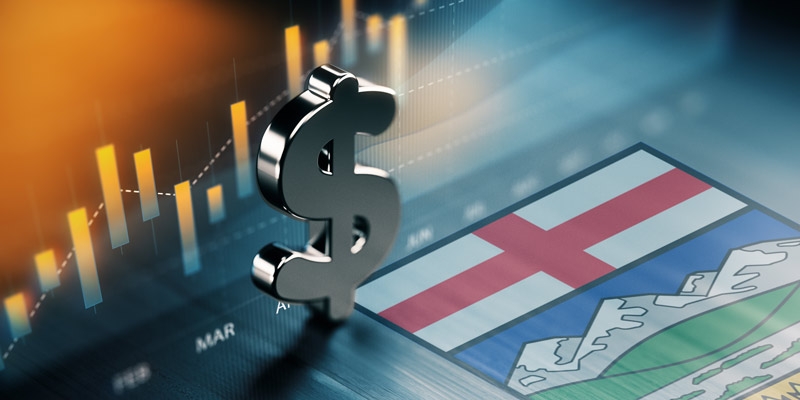Repairing Alberta's Heritage Fund for the Long Term

In 1976/77, Alberta’s Heritage Savings Trust Fund was created to save a share of the province’s resource wealth so as to provide benefits to Albertans in the future. Unfortunately, the Heritage Fund has been limited in its ability to do so as consistent non-renewable resource revenue (NRR) contributions ended in 1986/87, the real value of the fund eroded over time as a result of inflation, and nearly the entirety of fund earnings have been spent.
The first paper in this series on fixing Alberta’s finances for the long term, A New (Old) Fiscal Rule for Non-renewable Resource Revenue in Alberta, recommends that the province adopt a constitutional fiscal rule that requires a set portion of NRR be deposited in the fund annually. Bound by a strict fiscal rule, the renewed Heritage Fund would preserve a share of NRR as a financial asset that generates a permanent stream of earnings over time. This second paper examines rules for the use of the renewed Heritage Fund’s earnings, to reinforce robust fiscal rules around operation of the fund and ensure Alberta does not repeat past mistakes. Lessons are drawn from Alberta’s own history as well as Alaska’s experience with its successful resource savings fund—the Alaska Permanent Fund.
First, a portion of earnings should be set aside to offset the effects of inflation—to “inflation proof” the Heritage Fund and maintain its real value. Inflation proofing has been infrequent and inconsistent in the past, which led to a decline in the fund’s real value from $29.5 billion in 1985/86 to $15.4 billion 2004/05 and significantly limited its size relative to its potential. In contrast, inflation proofing has occurred consistently in Alaska’s Permanent Fund under a statutory rule that requires a portion of earnings be reserved to preserve the real value of the principal annually. This rule has helped maintain the Permanent Fund’s real value and contributes significantly to its US$65.3 billion size today.
If the Heritage Fund had been inflation proofed consistently since inception like the Permanent fund, it would be worth $33.7 billion rather than its actual value of $16.2 billion in 2019/20. While Alaska has managed to inflation proof the Permanent fund consistently under a statutory rule, a constitutional rule in Alberta would be even more robust over time and is therefore recommended.
A key question is how the provincial government can introduce rules to ensure the Heritage Fund is maintained during times of low NRR when there is a natural inclination, which history has repeatedly demonstrated, to soften or even eliminate the rules imposing fiscal discipline. Alaska’s Permanent Fund accomplishes this by paying out annual dividends to citizens to create buy-in by the general public to the idea that the fund should be maintained responsibly. By doing so, the dividend creates robustness in the fiscal rules around the fund.
The idea came from Jay Hammond, a former Governor of Alaska, who argued that, if citizens were given an ownership share in the state’s mineral resources, they would recognize their vested interest and demand that the state maximize returns from such resources. Specifically, when Alaskans were given a share in the earnings of the Permanent Fund, they were more inclined to support effective rules governing the fund, including consistent resource-revenue contributions and inflation proofing, and prudent investment and use of fund earnings, because these factors have a direct impact on the size of their dividend. A total of US$26.0 billion has been paid out to Alaskan citizens in the form of dividends.
A portion of Heritage Fund earnings should be paid as annual dividends to Albertans to create robustness in fiscal rules around its operation. If Alberta followed an approach similar to that of Alaska since the Heritage Fund’s inception, including mandatory NRR contributions (25% annually is used), consistent inflation proofing, and annual dividends, the fund would be worth approximately $234.2 billion today (2019/20). In total, it would have paid out $101.5 billion in dividends to Albertans, which would average $1,018 (inflation-adjusted) per Albertan annually and represent 2.1% of individual income on average.
Additionally, significant residual earnings—beyond those needed for inflation proofing and dividends—would be accumulated in the fund. There are several options for the residual earnings, including using them to eventually replace NRR in the budget, permanently reduce taxes, or repay debt. The ultimate decision on how to best use the remaining fund earnings, however, should be determined at a future date once the fiscal rules are set and the Heritage Fund is built up.
The combination of fiscal rules—including constitutionally mandated NRR contributions and inflation proofing, and annual dividends—would help to ensure fiscal rules around operation of the Heritage Fund are robust over time.




